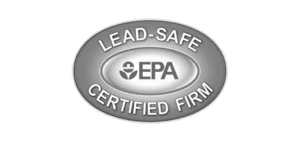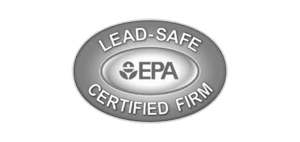Water damage can cause significant harm to your property and your wallet. Prevention is key to avoiding costly repairs in the future. By implementing these water damage prevention tips, you can ensure the safety of your home and protect your investment for years to come.
From identifying and fixing leaks promptly to maintaining your gutters and downspouts, there are several easy-to-follow steps that you can take to safeguard your home from water damage. Furthermore, regular inspection of appliances and plumbing can help detect potential issues before they turn into major problems.
In this article, we will take a closer look at the top tips to prevent water damage in your home, providing you with the necessary information to keep your property safe from water-related issues.
Key Takeaways:
- Implementing the provided water damage prevention tips can reduce the risk of costly repairs.
- Maintaining gutters and downspouts can prevent water damage.
- Regular inspection of appliances and plumbing can help detect potential issues.
- Proper landscaping and grading can redirect water away from your home.
- Insulating pipes can prevent them from freezing and bursting.
Identify and Fix Leaks Promptly
Leaks are one of the leading causes of water damage in homes. Identifying and fixing them quickly is crucial in preventing any further damage to your property. Follow these steps to prevent leaks from becoming a major problem:
- Regularly examine your pipes and faucets for any signs of leaks, such as puddles of water or rust stains.
- If you notice any leaks, turn off the water supply and fix the issue immediately.
- For larger leaks, consult a professional plumber to ensure the problem is resolved correctly.
Remember, even small leaks can cause significant damage over time, so it’s essential to address them promptly in order to avoid costly repairs. By taking proactive measures, you can prevent water damage and protect your home’s safety.
Maintain Gutters and Downspouts
Proper maintenance of your gutters and downspouts is crucial in preventing water damage to your home. Gutters and downspouts help to redirect water away from your home, protecting it from water-related issues. Over time, gutters and downspouts can become clogged with debris, which can lead to water build-up and potential damage to your property. Therefore, it’s important to maintain them regularly.
To maintain gutters and downspouts, follow these simple steps:
- Clean them regularly: Clear gutters and downspouts of leaves, twigs, and other debris to prevent water build-up.
- Inspect them for damage: Check for any damages or cracks in your gutters and downspouts, and replace or repair them immediately.
- Ensure proper drainage: Make sure your gutters and downspouts are angled correctly to efficiently direct water away from your home.
It’s important to note that neglecting the maintenance of your gutters and downspouts can lead to costly water damage repairs. Therefore, make it a habit to maintain your gutters and downspouts regularly to keep your home safe and protected.
Install a Sump Pump
If you live in an area with a high water table or experience heavy rainfall, a sump pump is an essential investment to prevent basement flooding and water damage. Installing a sump pump can be a complex DIY project, and it is recommended to hire a professional to ensure proper installation.
The first step to installing a sump pump is to identify the lowest point in your basement where water tends to collect. This is usually in a pit or basin where the sump pump will be installed. Next, you will need to dig a hole deep enough to accommodate the pump and basin.
Once the hole is dug, you will need to install the sump basin and connect it to a discharge pipe that will carry water out of your home and away from the foundation. It is important to ensure that the discharge pipe is directed away from your home and does not drain onto your neighbor’s property.
After the pump and discharge pipe are installed, you will need to connect the pump to a power source and test it to ensure that it is working correctly. It is recommended to have a backup power source in case of a power outage, as sump pumps rely on electricity to function.
Regular maintenance of your sump pump is crucial to ensure that it continues to function correctly. This includes testing the pump frequently, cleaning the basin, and checking the discharge pipe for any obstructions.
Investing in a sump pump can save you thousands of dollars in water damage repairs and provide you with peace of mind during heavy rainfall or high water table conditions.
Ensure Proper Landscaping and Grading
Proper landscaping and grading are essential elements in preventing water damage in your home. Your landscaping and grading design should encourage water to flow away from your house and not towards it. The following tips will help you maintain proper landscaping and grading:
- Create a slope: Your lawn should slope down from your house to prevent water from pooling around the foundation. The slope should be at least 6 inches for every 10 feet away from your home to effectively redirect water.
- Install a drainage system: Consider installing a drainage system, such as a French drain or a dry well, to direct water away from your home.
- Plant the right vegetation: Use plants and shrubs that absorb water well and avoid those that require excessive watering. Consider planting rain gardens, which are designed to capture and absorb excess water runoff.
By following these proper landscaping and grading techniques, you can prevent water from infiltrating your home’s foundation, causing water damage and costly repairs.
Insulate Pipes to Prevent Water Damage
Properly insulated pipes can prevent them from freezing and bursting during colder months, which can lead to water damage. Insulating your pipes is a simple and cost-effective way to protect your home from potential water damage.
Pipe insulation can be made of various materials, including foam, fiberglass, or rubber. It is essential to choose the right type and size of insulation according to your pipes’ diameter and location. Insulation materials come with an R-value, which measures the insulation’s thermal resistance. The higher the R-value, the better the insulation’s performance, so make sure to purchase insulation with an appropriate R-value to maximize its effectiveness.
| Steps to Insulate Pipes |
|---|
| 1. Identify which pipes need insulation. Pipes in unheated areas, such as garages, attics, or crawl spaces, are more susceptible to freezing and bursting. |
| 2. Measure the diameter and length of the pipes to determine the amount of insulation needed. |
| 3. Purchase the appropriate insulation material with the recommended R-value. |
| 4. Cut the insulation to the proper length and wrap it around the pipe, ensuring a snug fit without any gaps. |
| 5. Secure the insulation with tape or wire, making sure not to compress or damage it during installation. |
| 6. Repeat the process for all pipes needing insulation. |
Insulating your pipes can provide long-term benefits by preventing potential water damage from frozen or burst pipes. By taking this simple precaution, you can safeguard your home and avoid costly repairs.
Regularly Check Appliances and Plumbing
If you want to prevent water damage in your home, it’s essential to check your appliances and plumbing regularly. By doing so, you can detect any potential issues before they turn into significant problems that could cost you a fortune.
First, you should check your appliances, such as your washing machine, dishwasher, and refrigerator, for any signs of leaks or damage. If you notice any issues, such as cracks or bulges in the hoses, you should replace them immediately. Additionally, you should inspect the connections to ensure they are tight and secure.
Next, you should check your plumbing regularly. Look for signs of leaks or water damage, such as water stains on walls or ceilings, musty odors, or drips from faucets. If you notice any of these issues, you should take immediate action and repair the damage before it becomes worse.
It’s also a good idea to have a professional plumber inspect your plumbing system annually. They can identify any potential issues and address them before they cause significant water damage to your home.
By checking your appliances and plumbing regularly, you can prevent water damage and save yourself a lot of money in the long run. So, make it a habit to inspect them frequently and take action as soon as you notice any issues. Your wallet will thank you.
Conclusion
Now that you have learned the top water damage prevention tips for your home, it’s time to implement them. By identifying and fixing leaks promptly, maintaining your gutters and downspouts, installing a sump pump, ensuring proper landscaping and grading, insulating your pipes, and regularly checking your appliances and plumbing, you can greatly reduce the risk of water damage.
Remember, being proactive and taking these necessary precautions can save you from costly repairs and protect the safety of your home. Don’t wait for a water damage emergency to happen before taking action. Start implementing these tips today and enjoy peace of mind knowing that your property is safe from water damage.
FAQ
What are the top water damage prevention tips for your home safety?
The top water damage prevention tips for your home safety include identifying and fixing leaks promptly, maintaining gutters and downspouts, installing a sump pump, ensuring proper landscaping and grading, insulating pipes, and regularly checking appliances and plumbing.
How do I identify and fix leaks promptly?
To identify and fix leaks promptly, regularly check for signs of water damage, such as water stains, mold, or musty odors. Once you locate a leak, determine its source and repair it immediately to prevent further damage.
What steps should I take to maintain gutters and downspouts?
To maintain gutters and downspouts, regularly clean them to remove debris, such as leaves and twigs. Ensure that they are securely attached to your home and properly direct water away from the foundation.
How do I properly install and maintain a sump pump?
When installing a sump pump, ensure that it is placed in a designated sump pit and connected to a power source. Test the pump regularly and keep it clean to ensure proper functioning.
What are the best practices for landscaping and grading to protect my property?
Proper landscaping and grading involve creating slopes away from your home, using plants that promote water absorption, and directing rainwater to appropriate drainage areas. Avoid planting trees or shrubs too close to your foundation.
How do I effectively insulate my pipes?
Insulating pipes involves using foam insulation sleeves or wrapping them with heat tape. Pay special attention to pipes in unheated areas, such as attics and crawl spaces, to prevent freezing and potential bursting.
How often should I check my appliances and plumbing?
It is recommended to regularly check your appliances and plumbing at least once every six months. Look for signs of leaks, corrosion, or any abnormal functioning, and address any issues promptly.










